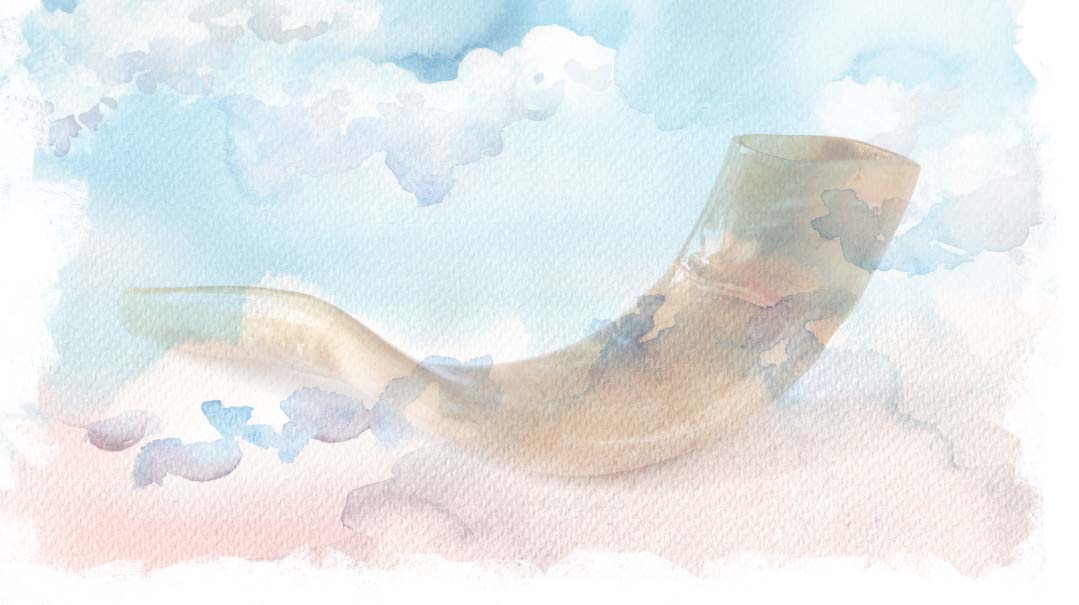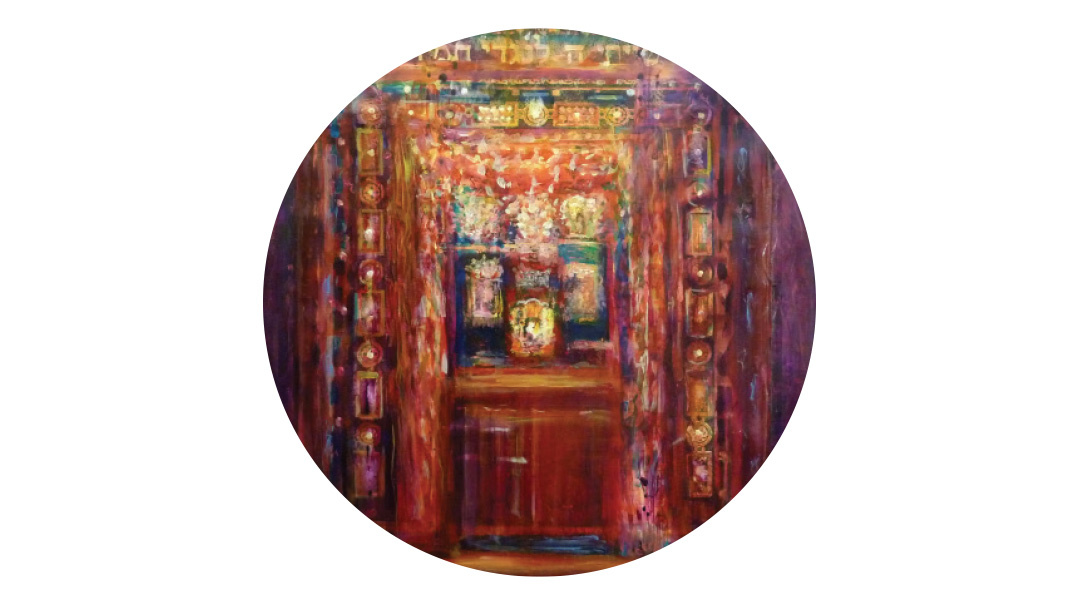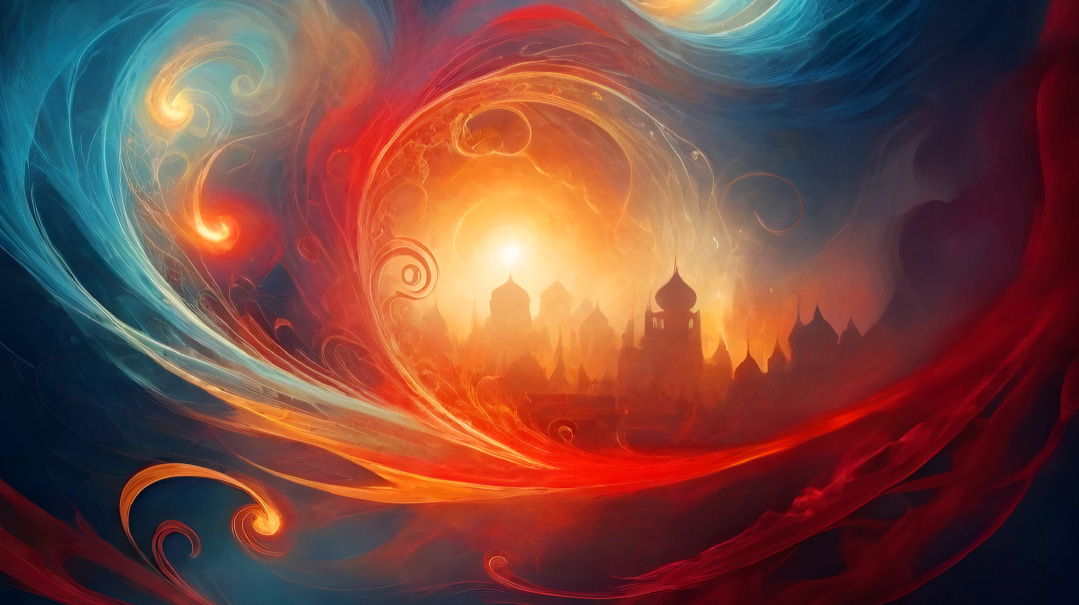Shofar Kavanos Made Simple

What thoughts should go through our minds during these auspicious moments?

It’s the most dramatic aspect of the most significant days of the year. Our lives are hanging in the balance. The baal tokeia ascends the bimah. Hashem is about to move from the Throne of Judgment to the Throne of Mercy. What thoughts should go through our minds during these auspicious moments?
General Reflections Before the Tekiyos
The baal tokeia may have studied layers and layers of kabbalistic intentions. They are way beyond us and not relevant to our thoughts.
When we hear the baal tokeia say the word, “V’tzivanu — Who has commanded us,” we should accept that we want to do Hashem’s Will. The King has commanded us to blow the shofar, and we rejoice that we have the privilege and opportunity to serve Him.
Take note of the shape of the shofar. It’s curved, like a person bending in front of royalty in total submission.
Remind yourself that the shofar comes from a ram’s horn. This invokes Akeidas Yitzchak, the ultimate submission of man before G-d.
Three Themes to Ponder Before the Tekiyos
Teshuvah. The Rambam cries, “Wake up from your slumber!” Focus on a few practical changes you wish to work on, with the underlying goal of realigning your life to serve Hashem to the best of your ability.
Proclaiming the King. The shofar is like a trumpet announcing the opening of the King’s court of justice. Unlike other defendants, we willingly call upon Him to judge us. We thus demonstrate that our first value is our relationship with Hashem, not our comfort. Even if Hashem’s judgment seems harsh, we know its purpose is not punitive, but to repair our relationship with Him. This is all we want. Hashem, in turn, is moved by our desire and invokes His attribute of mercy.
The Shofar of Salvation. The shofar contains a hidden force that takes us on a journey from the breath of Hashem that He breathed into man at the time of creation, to the Akeidah and the shofar at Har Sinai, all the way to the shofar of Mashiach and techiyas hameisim. These thoughts should instill us with awe.
Final Pre-Tekios Thoughts: Confusing the Satan
The 100 shofar blasts are divided into three groupings: 30 before Mussaf, 30 (in most shuls) during chazaras hashatz, and 40 at the end of davening. The 30 during chazaras hashatz are divided into three groupings of ten, corresponding to the sub-sections of Malchuyos, Zichronos, and Shofros. The final 40 are often broken down to 30 and a grand finale of 10. The main obligatory tekios are the middle grouping, during chazaras hashatz.
The Satan is caught off balance and weakened by the division of the tekios for three reasons.
The first 30 are sounded before the obligatory tekios, as if we’re confidently saying to the Heavenly tribunal, “Bring it on! We’re honored to be judged by the King!”
Adding on 30 non-obligatory tekios shows our love of mitzvah performance.
Having heard the first set of shofar blasts, the Satan assumes the second set must be the shofar signaling the End of Days, heralding his final demise.
Thoughts When We Hear the Tekios
When we hear the shofar blast, our main focus is hearing the sound. However, we should have an underlying awareness that the sounds are broken into three categories.
Opening Tekiah. Corresponds to Hashem’s middah of chesed. This blast invokes Hashem’s unceasing love.
The middle Shevarim, Teruah, Shevarim-Teruah. Corresponds to Hashem’s middah of din. The three sub-categories of broken sounds invoke the different way people cry. They’re expressions of our broken hearts from the suffering of galus.
Closing Tekiah. Corresponds to Hashem’s middah of rachamim. It invokes the triumph of Geulah.
The three categories correspond to Avraham (chesed), Yitzchak (din) and Yaakov (rachamim). They also correspond to the three sections of the Shemoneh Esreh: shevach (praise), bakashah (expressing our needs), and hoda’ah (thanksgiving).
Advanced Thoughts When We Hear the Tekios
Many machzorim bring Rav Saadiah Gaon’s ten symbolic allusions in the mitzvah of shofar. They weave together the three themes of shofar. We’re presenting them in a way that parallels and elucidates the ten sets of shofar blasts:
Tekios Before Mussaf
First set: The first time we hear the shofar this Rosh Hashanah inspires fear and trembling in our hearts.
Second set: We’re reminded of Akeidas Yitzchak, when a ram was sacrificed in lieu of Yitzchak. We daven that by invoking Avraham and Yitzchak’s mesirus nefesh, Hashem will remember us for the good.
Third set: We’re inspired to do teshuvah. Just like a king declares amnesty before he punishes wrongdoers, the shofar blast is a wakeup call to take advantage of this propitious moment.
Tekios of Chazaras Hashatz
Fourth set: Malchuyos. On Rosh Hashanah we relive the moment when Hashem became Sovereign of the universe. We blow the shofar as trumpet blasts that coronate the King.
Fifth set: Zichronos. The shofar invokes the shofros blown by our enemies at the time of the Churban. This inspires our tefillos for the rebuilding of the Beis Hamikdash.
Sixth set: Shofros. We remember the shofar blown at Har Sinai, and we rededicate ourselves to kabbalas haTorah.
Tekios after Mussaf
Seventh set: The shofar reminds us of the admonitions of our prophets who, like shofros, woke us up to do teshuvah.
Eighth set: We yearn for the Great Shofar that heralds the Ingathering of Exiles.
Ninth set: We tremble when we remember the future Day of Judgment, described as a day of shofar blowing.
Final Ten Tekios
Tenth set: The shofar invokes the final shofar that accompanies techiyas hameisim.
Sisera’s Mother
We’ve just heard 100 shofar blasts. The Midrash relates that the evil Sisera’s mother cried 100 times in fruitless anticipation of her son’s return from battle with Devorah Haneviah. Our 100 shofar blasts seek to nullify the cruelty of Sisera and his mother and invoke Hashem’s rachamim.
On a deeper level, we note that Sisera’s mother’s cries were directed to avodah zarah. Our final shofar blasts convert the evil power of avodah zarah back to the side of holiness, reflecting the culmination of what Rosh Hashanah seeks to achieve, when the entire world and its powers recognize Hashem.
Sisera’s mother reminds us that when a soldier goes to battle, his mother awaits his return. When our neshamah descends into our physical bodies, it enters into a state of war against the yetzer hara. Our “Mother,” the Holy Shechinah, awaits our return. The final shofar blasts arouse us to feel the pain of the Shechinah as it longs for us to return.
Tekiah Gedolah
Just like the taste of the afikomen at the end of Seder night is intended to help us hold on to the inspiration of the evening beyond the Seder, the extended Tekiah Gedolah is intended to help us hold onto the inspiration of shofar as we go and enjoy our Yom Tov seudah.
Leaving shul, our hearts are filled with joy. In the words of Ezra and Nechemiah (Nechemiah 8:10), “Go, eat choice foods and drink sweet drinks and send portions to whoever has nothing prepared, for the day is holy to Hashem. Don’t be sad, for your rejoicing in Hashem is the source of your strength.”
A print-friendly version and an expanded version are both available online.
mishpacha.com/shofar-kavanos
Endnotes
Rosh Hashanah 16a
Rosh Hashanah 26b
Rambam, Teshuvah 3:4
Midrash Rabbah, Vayikra 29:3
Tur, Orach Chayim 585
Sfas Emes, Rosh Hashanah 5648
Arranged by Rav Zave Rudman
Tosafos Rosh, Rosh Hashanah 33b
Rav Tzaddok HaKohein, Resisei Lailah 46
Rav Moshe Leiber
Taz, Orach Chayim 596
(Originally featured in Family First, Issue 758)
Oops! We could not locate your form.







